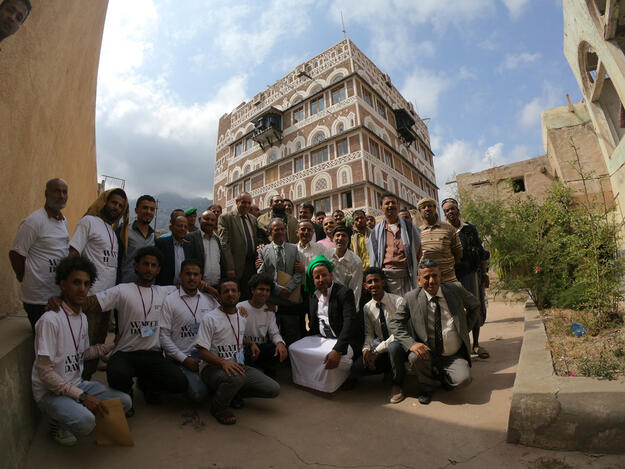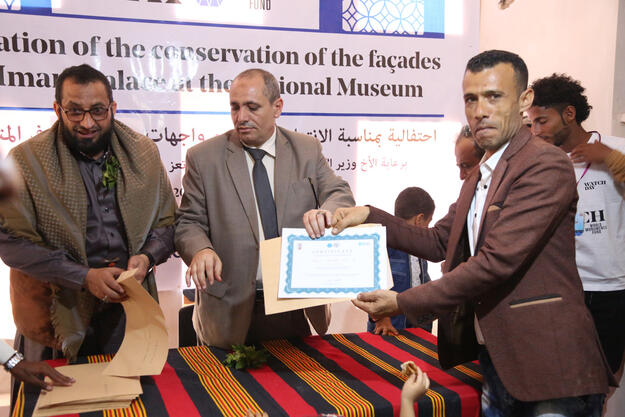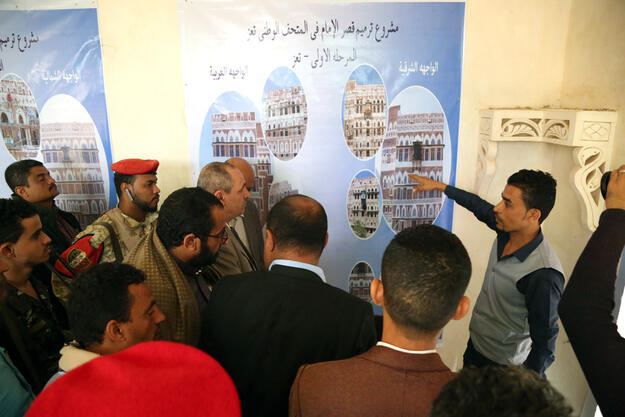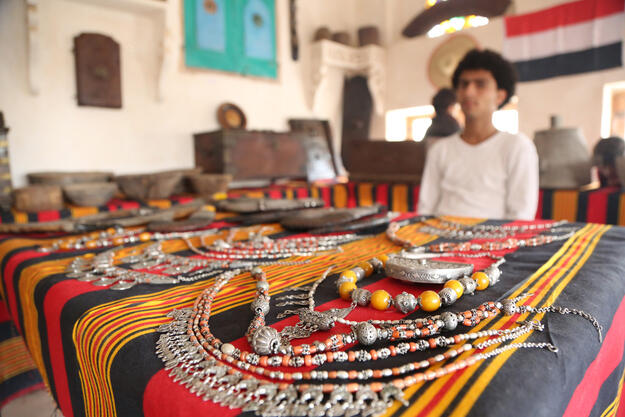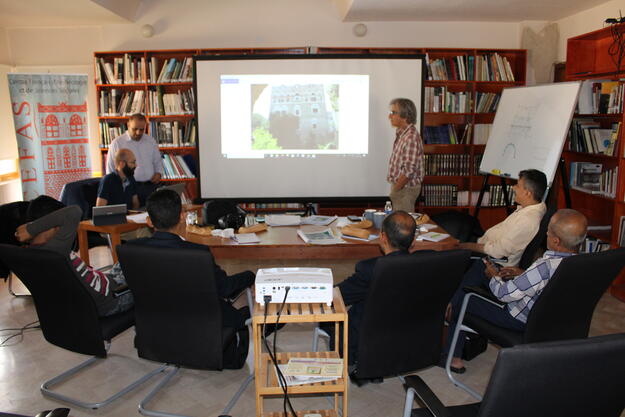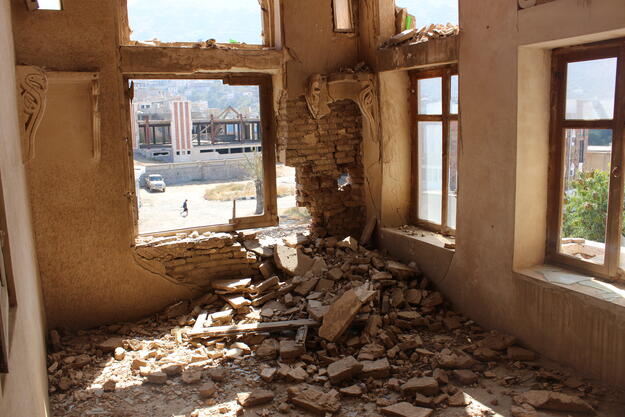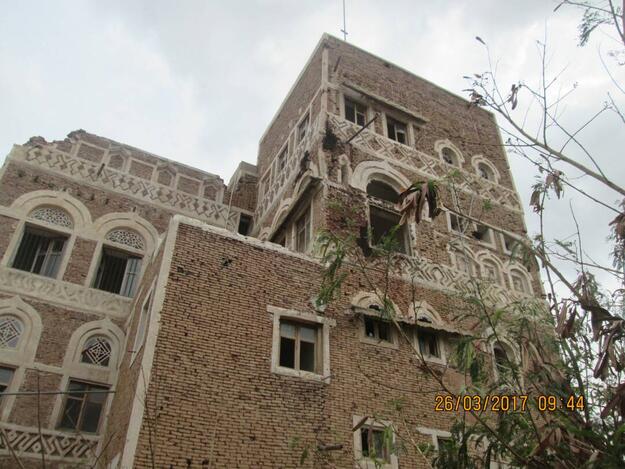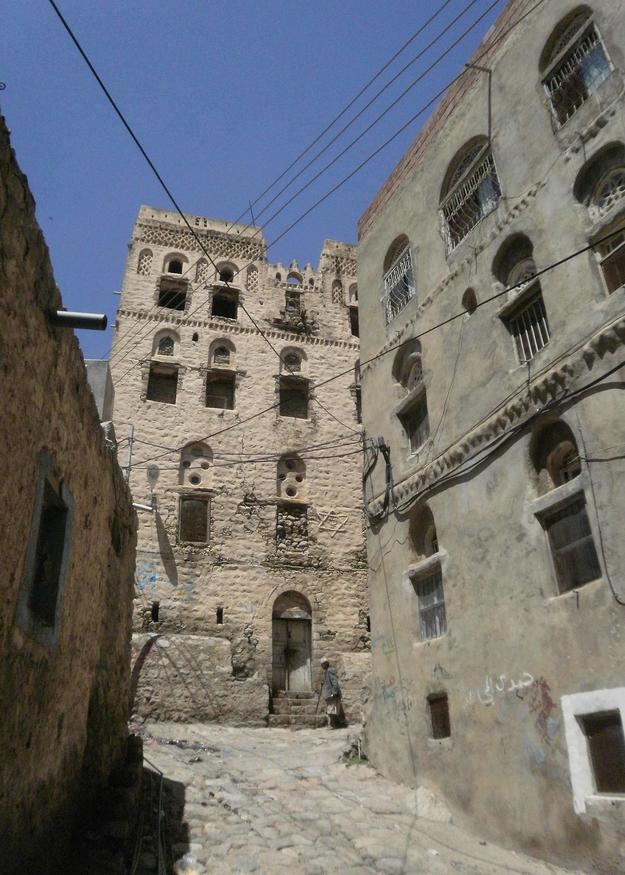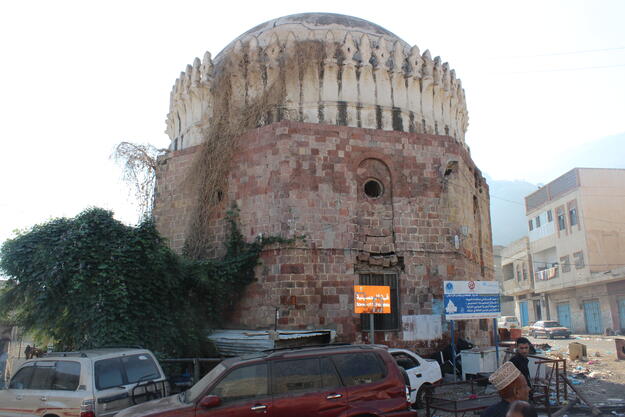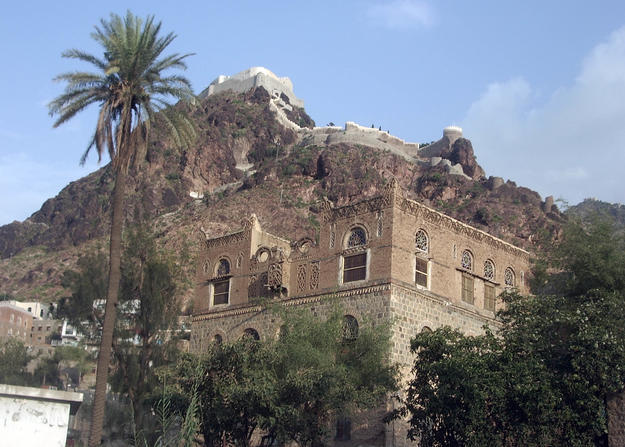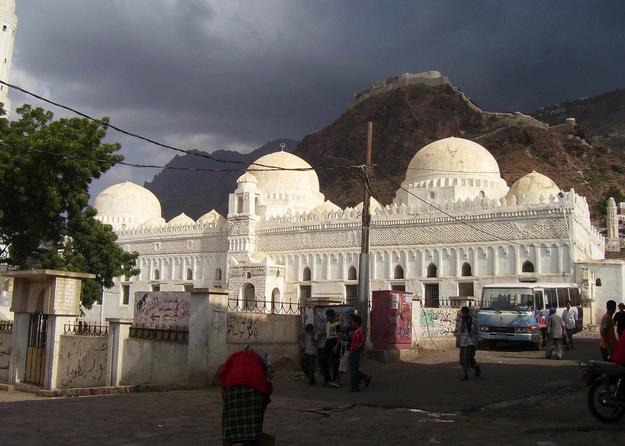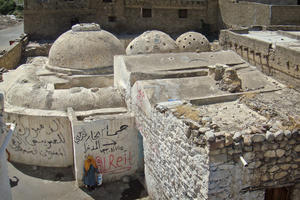Old City of Ta’izz
Site History and Significance
A Historic City
The historic city of Ta’izz is the third largest urban center in Yemen. A fortified settlement during the Sulayhid dynasty’s rule in the eleventh century, it later became an Ayyubid stronghold and the site of the Ayyubid treasury. The quarters of the city grew below a fortified citadel, and Ta’izz reached its golden age as the capital of the Rasulid dynasty, which ruled Yemen from 1229 to 1454. The Rasulid sultans are known for having built lavish palaces, as well as mosques and madrassas, although only three religious monuments from this period of the city’s history have survived.
The Scars of Civil War
Once the cultural capital and industrial hub of Yemen, Ta’izz bears the scars of some of the worst fighting of the current civil war. Between 2015 and 2017, rebels seeking to wrest control from the government left a path of destruction as they held the city under siege. These rebels initially seized the citadel, which was subsequently targeted and damaged by airstrikes in May 2015, and in 2016, the Ta’izz Museum complex was shelled, destroying its collection of manuscripts. In addition, a historic sixteenth-century mosque was blown up by extremists.
Our Involvement
2018 World Monuments Watch
In 2018, even more historic buildings were damaged by shelling and street fighting between rebel militias and resistance forces, which also left millions in dire need of humanitarian assistance. The city’s inclusion on the 2018 World Monuments Watch is an expression of concern for the protection of the historic built fabric of Ta’izz and for the welfare of its citizens. Since then, World Monuments Fund (WMF) has partnered with the General Organization of Antiquities and Museums (GOAM) in Ta’izz to conserve important cultural sites in urgent need of intervention and to develop a blueprint for long-term stewardship.
Progress toward Revitalization
Since 2018, WMF has led a wide-ranging initiative to support the recovery of one of Yemen’s most iconic cities. Because the conflict prevented WMF staff from traveling to Ta’izz, training workshops for GOAM staff were convened in Kuwait and Cairo that equipped them with the necessary skills to implement conservation measures back in Yemen.
Qubbat al-Husayniyah, an important Ottoman-era mausoleum, was in a state of rapid deterioration due to dire economic circumstances exacerbated by the conflict. Completed in March 2021, the emergency stabilization project repaired cracks in the mausoleum’s dome and addressed encroaching vegetation that placed the entire structure at risk.
In 2019, WMF received support from the British Council Cultural Protection Fund for the physical rehabilitation of the Imam Palace, part of the Ta’izz Museum complex and home to the National Museum, which sustained significant damage when it was shelled by Houthi rebels in February 2016. Following an earlier phase of facade restoration completed at the end of 2019, the restoration of its interior spaces was finished in February 2021.
Further Efforts
With support from the International alliance for the protection of heritage in conflict areas (ALIPH), WMF is launching a new project in July 2021 at Hammam al-Mudhaffar, one of Yemen’s oldest surviving public bath complexes, to restore the site’s original function and support its vital role as a refuge for residents seeking solace and social connection. Once completed, the reopening of the hammam has the potential to inspire regeneration throughout the ‘Udayna quarter in the Old City.
Beyond individual projects, WMF is preparing a set of conservation guidelines for the protection of the entirety of the Old City of Ta’izz. A crucial resource for informing future development that is sensitive to the city’s defining historic features, the guidelines will enable GOAM to proactively safeguard their cultural heritage when the inevitable reconstruction and development of the city takes place. This effort, supported by ALIPH, will put culture at the heart of Ta’izz’s long-term recovery through a collaborative process inviting participation from local stakeholders and communities.
Learn More
World Monuments Fund safeguards cultural heritage around the globe, ensuring our treasured places are preserved for present and future generations.
Sign up for our newsletter to receive regular updates on our projects, stories from the field, upcoming events, and more!
![]()
With support from the International alliance for the protection of heritage in conflict areas (ALIPH) and the British Council Cultural Protection Fund.

